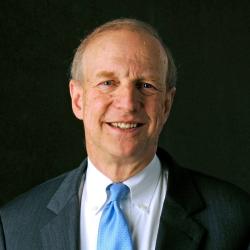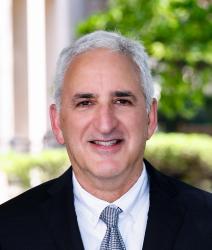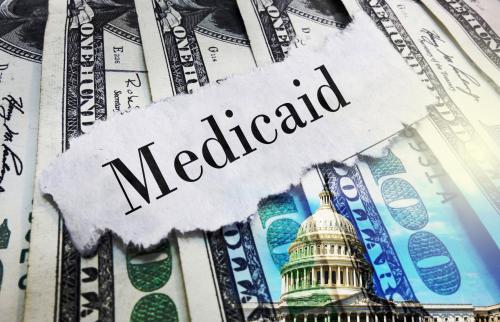In December, while public attention focused on impeachment, the most extensive retirement legislation in more than a decade was passed and signed into law. Spearheaded by House Ways and Means Chairman Richard Neal (D-MA), the SECURE Act of 2019 was three years in the making and designed to raise the level and security of retirement saving. The Act is a step in the right direction, but it does not address the 55 million U.S. workers with no workplace retirement plan. Other reforms, including some form of universal coverage like Automatic IRAs, will prove essential to a future where every American has access to a secure retirement.
The Act includes a variety of constructive, pro-saving provisions: a new tax credit for small plans adopting automatic enrollment, expanded permission for certain auto enrollment “safe harbor” plans to automatically increase employee contributions, a larger tax credit for small employers adopting new retirement plans, repeal of the ban on contributing to traditional IRAs after age 70½, and a requirement that certain long-term, part-time workers be allowed to contribute to retirement plans. The Act also permits retirees to defer the start of required minimum distributions (RMDs) from age 70½ to 72, and, to accommodate certain plans that no longer admit new participants, it relaxes some of the prohibitions on discrimination in favor of highly paid employees.
Two of the most significant accomplishments in the SECURE Act are a measure that promotes 401k plans’ expanded use of lifetime income products such as annuities, and a measure that allows the wider adoption of multiple employer plans (MEPs).
The annuity provisions encourage savers to convert retirement account balances to regular, lifelong income that protects against outliving one’s retirement savings. A new safe harbor will help 401(k) plans offer commercial annuities by protecting plan sponsors from fiduciary liability for selecting an annuity provider even if it later fails to meet its annuity obligations. This is an important advance, although the safe harbor would have been more effective and protected consumers better if it had been limited to annuity providers meeting high quality standards, such as high financial strength ratings from multiple rating agencies (or from an independent, expert, fiduciary entity providing or vetting such ratings publicly for all interested plans), and conditioned on selecting simple, low-cost, fixed income annuities, as we propose in our earlier paper and policy brief.
One related provision makes plan-offered annuities more portable, and another, along the lines we proposed more than a decade ago, requires that plans disclose to 401(k) participants the estimated monthly retirement income their account balances could produce.
The MEP provision allows unrelated businesses to participate jointly in a retirement plan that is intended to have lower costs and fewer administrative responsibilities for employers than 401(k) plans sponsored by individual companies. Previously, businesses could offer a MEP only if they had a prior connection such as membership in the same association. The SECURE Act will allow asset managers and record keepers to market “open” MEPs to unrelated small businesses, most of which don’t offer their employees a retirement plan. It also helpfully protects MEPs by repealing a previous rule (the “one bad apple” rule) that exposed an entire MEP to disqualification for violations by a single participating employer. While much of the cost savings and reduction of employer administrative responsibilities have been achievable before the SECURE Act, the availability of open MEPs should reenergize public marketing of 401(k) plans by giving vendors a new reason to knock on the doors of prospective clients.
Open MEPS should therefore help raise retirement plan coverage, although probably not dramatically. Employers will still have the fiduciary responsibility to be prudent in deciding whether to join or stay in a particular MEP. The magnitude and impact of the cost savings are uncertain. Many small employers are deterred from sponsoring plans not only by perceived cost but also by limited bandwidth and the sense that employees have other priorities. For many in the financial services industry, the appeal of open MEPs seems to be less in persuading small employers to sponsor their first plan and more in reshuffling the deck: seeking to use greater scale and consolidation to attract competitors’ existing clients.
By promoting tax-favored saving, the SECURE Act will reduce revenue coming in to the government, but that cost is offset by requiring individuals who inherit retirement savings to pay tax on the inherited amount within ten years rather than, as under previous law, stretching the tax over the heir’s entire lifetime. Among other exceptions, this tightener will not apply to retirement savings inherited by a surviving spouse.
All in all, the SECURE Act should have a meaningful, positive effect on retirement plan coverage and saving, But it’s only a start, and it would be a mistake for legislators and others to assume that they can rest on their laurels. Much more needs to be done, starting with a universal retirement savings program such as an Automatic IRA that allows all Americans to save for retirement from the day they start work until the day they retire. The Automatic IRA would supplement rather than replace or compete with 401(k) plans, making saving easy for those who are not eligible to participate in a retirement plan at work, and in fact leading to wider adoption of 401(k) plans.
Six states already have adopted Automatic IRA programs, with promising results. A national program would be even more successful. But universal coverage, while essential, is not enough. Retirement savers must be able to move their accounts from employer to employer and consolidate their benefits so that previous savings are not lost. They also need universal automatic mechanisms to help them both to save enough and to make appropriate investments with low fees. And when they reach retirement, savers need a simple, low-cost method to convert their savings into income. The SECURE Act is a step towards these goals, but a great deal of additional work will be required to ensure all Americans can build retirement security.
The Brookings Institution is committed to quality, independence, and impact.
We are supported by a diverse array of funders. In line with our values and policies, each Brookings publication represents the sole views of its author(s).









Commentary
The SECURE Act: a good start but far more is needed
January 8, 2020